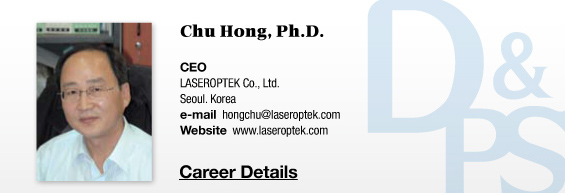In the 1960s, Goldman pioneered medical laser whose main purpose has switched from therapy to aesthetic improvement. And various types of aesthetic laser devices have followed. Starting in the 1960s, the last 55 years saw numerous new laser devices being developed for tackling a wide variety of conditions such as pigmented lesions, vascular lesions, hair removal, wrinkle reduction, elasticity, anti-aging, and fat removal, etc.
Treatment of pigmented lesions improved from ruby laser to Q-switched Nd:YAG and alexandrite laser and more recently, picosecond laser. In the field of vascular lesions, modalities were upgraded from Q-switched ruby laser into Cu Vapor (CuBr) laser, dye laser, and long pulsed laser. Laser hair removal started out with ruby laser and moved onto long-pulsed laser (Alexandrite, Diode, Nd:YAG).
Extensive research drove developments in the field of medical laser for the last few decades. Various methods are also available or fat removal, improved elasticity and anti-aging. The 920nm diode laser or 1064/1320nm Nd:YAG laser with high absorption in fat are used in laser assisted liposuction. Fractional CO₂and Er:YAG laser are used in resurfacing for skin rejuvenation. Fraxel (Er:glass fiber Laser, wavelength: 1550nm) and 1440nm Nd:YAG laser, diode laser, etc. are used for anti-aging and better skin elasticity. However, many of these products are released without sufficient clinical evidence and briefly achieve high sales due to aggressive advertising but disappear from the market in a couple years.
<Advertisement> HELIOSⅡ/LOTUSⅡ/HYPERION – Manufacturer: LASEROPTEK(www.laseroptek.com)
In 2001, Rox Anderson contributed to the Letters to the Editor section of Lasers in Surgery and Medicine (Vol. 28, p. 102). This letter summarizes current major events in the medical market and predictions of what will follow in the future. In his article “Ethical considerations concerning laser medicine,” Christian Raulin emphasized that doctors should not view patients only from a financial perspective and avoid using devices and products that do not have sufficient clinical evidence Moreover, non-ablative laser rejuvenation devices that have FDA approval may be withdrawn from the market due to lack of safety and efficacy data. I believe they provided valuable advice to fellow doctors on how to lead the medical market in a healthier and more ethical direction.
An overriding sentiment that I have had while discussing the history of dermatologic laser over the last six articles is that Korea has the potential to catch up with global medical leaders such as the US. If laser manufacturers, hospitals, doctors and the government can achieve a mutually beneficial, collaborative relationship, Korea will be able to produce world class medical lasers and stand shoulder to shoulder with the global leaders in this field.
-To be continued





















